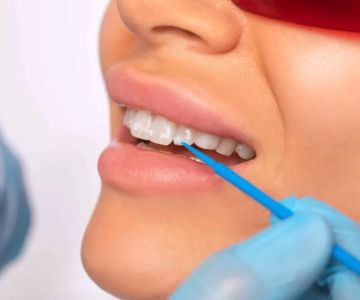- 1-understanding-filling-materials
- 2-immediate-post-treatment-care
- 3-long-term-maintenance-routine
- 4-foods-and-habits-to-avoid
- 5-identifying-issues-early
- 6-professional-checkups-and-replacements
1. Understanding Filling Materials
1.1 Common Types and Their Properties
When learning how to care for dental fillings after treatment and maintenance, it helps to know material differences. Composite resins blend with tooth color but can wear faster than amalgam, which is durable yet more noticeable. Glass ionomer releases fluoride but may chip under heavy chewing. Recognizing these properties guides your care routine.
1.2 Personalized Recommendations
Dr. Li at Dentistry Toothtruth often advises patients with resin fillings to use lower-abrasion toothpaste, whereas those with amalgam may focus more on avoiding extreme temperature changes. Tailoring maintenance to your filling type enhances comfort and durability.
2. Immediate Post-Treatment Care
2.1 Managing Sensitivity and Discomfort
- First 24 Hours: Avoid chewing on the treated side to allow the filling to set fully. Cold sensitivity is normal; a desensitizing toothpaste can soothe mild discomfort.
- Pain Control: Over-the-counter NSAIDs reduce inflammation around the filled tooth. Apply a soft cold compress against the cheek for 10 minutes to relieve swelling.
- Gentle Cleaning: Brush softly with a soft-bristled brush and rinse with warm salt water to keep the area clean without disturbing the new filling.
2.2 Case Example: Emily’s First Week
Emily, a university student in Boston, followed these steps after getting a molar filled. By day three, discomfort subsided, and she maintained her usual study routine. Her proactive approach exemplifies how immediate care sets the stage for long-term success.
3. Long-Term Maintenance Routine
3.1 Daily Oral Hygiene Practices
- Twice-Daily Brushing: Use a non-abrasive fluoride toothpaste to protect both enamel and filling edges without causing wear.
- Daily Flossing: Glide floss gently around the filled tooth to remove plaque and prevent decay at the margins.
- Antibacterial Rinses: An alcohol-free mouthwash helps control bacteria that can undermine filling integrity.
3.2 Nighttime Protection
If you grind your teeth, custom night guards from Dentistry Toothtruth protect fillings from excessive force, reducing cracks and wear over years of use.
4. Foods and Habits to Avoid
4.1 High-Risk Foods
- Sticky Candies: Caramel and taffy can pull at filling edges, leading to dislodgement.
- Hard Nuts and Ice: Biting into hard items risks chipping both tooth and filling.
- Excessive Sugary Drinks: Acidic sodas and juices erode enamel around fillings, inviting decay.
4.2 Harmful Habits
Nail-biting, chewing pens, or using teeth as tools can stress fillings unevenly. Replacing these habits with healthier alternatives preserves your dental work.
5. Identifying Issues Early
5.1 Warning Signs to Watch
- Persistent Sensitivity: Sharp pain when biting may signal a crack or decay beneath the filling.
- Rough or Sharp Edges: Feeling an irregular surface indicates wear or chipping that needs professional smoothing.
- Discoloration Around Edges: Dark lines or discoloration can suggest leakage or secondary decay.
5.2 Personal Story: Mark’s Discovery
Mark, an office manager in Denver, noticed a faint metal taste and slight roughness on his filling. A prompt visit to Dentistry Toothtruth uncovered a minor fracture, which was repaired quickly—preventing more extensive work later.
6. Professional Checkups and Replacements
6.1 Routine Dental Visits
Scheduling exams every six months allows your dentist to assess filling integrity, polish surfaces, and detect early signs of failure. X-rays can reveal hidden decay beneath restorations before symptoms appear.
6.2 When Replacement Becomes Necessary
Fillings typically last 5–15 years depending on material and care. If a filling shows significant wear, recurrent decay, or structural compromise, your dentist at Dentistry Toothtruth will recommend a replacement or upgrade to a more durable material.
Embracing Lasting Oral Health
By understanding how to care for dental fillings after treatment and maintenance—from immediate post-treatment steps to long-term habits—you secure your smile’s function and appearance for years to come. Partnering with dental professionals and following personalized care plans ensures each filling remains strong, comfortable, and dependable.







 Chandler Dental Arts4.0 (715 review)
Chandler Dental Arts4.0 (715 review) Legacy Dental Care4.0 (26 review)
Legacy Dental Care4.0 (26 review) Advanced Endodontics4.0 (71 review)
Advanced Endodontics4.0 (71 review) Robert Niles5.0 (2 review)
Robert Niles5.0 (2 review) Midwest Dental - Middleton4.0 (159 review)
Midwest Dental - Middleton4.0 (159 review) Precision Dental Partners4.0 (41 review)
Precision Dental Partners4.0 (41 review) The Importance of Oral Health Education During Pregnancy for a Healthy Pregnancy
The Importance of Oral Health Education During Pregnancy for a Healthy Pregnancy Best Tips for Brushing Your Teeth Properly for Healthy Gums: Essential Techniques for Oral Health
Best Tips for Brushing Your Teeth Properly for Healthy Gums: Essential Techniques for Oral Health Why Skipping Dental Checkups Can Lead to Bigger Oral Health Problems
Why Skipping Dental Checkups Can Lead to Bigger Oral Health Problems Advantages of Porcelain Dental Restorations
Advantages of Porcelain Dental Restorations How Can Diabetes Cause Tooth and Gum Problems? Preventing and Managing Oral Health Issues
How Can Diabetes Cause Tooth and Gum Problems? Preventing and Managing Oral Health Issues Healthy Habits for Promoting Good Oral Health and Hygiene: Tips for a Healthy Smile
Healthy Habits for Promoting Good Oral Health and Hygiene: Tips for a Healthy Smile